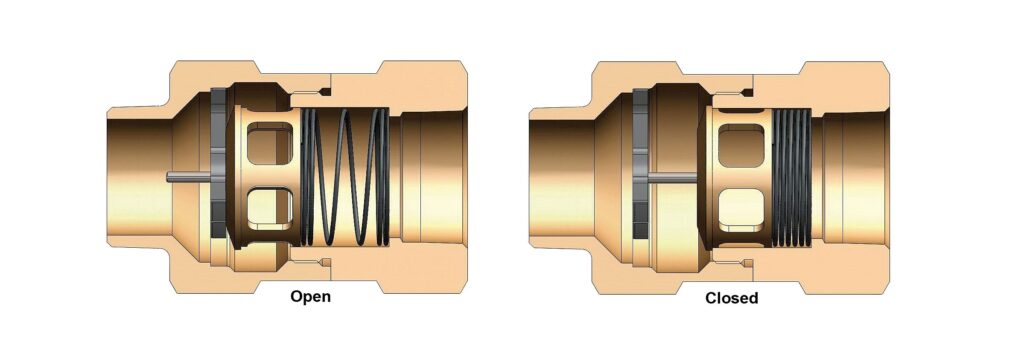Discover the essential role of a check valve in fluid systems. This article provides a comprehensive explanation of what a check valve is, its functionality, and its applications. Learn how a check valve allows the flow of fluid in one direction while preventing backflow, ensuring the efficiency and safety of various systems. Whether in plumbing, HVAC, or industrial processes, understanding the purpose and types of check valves is crucial for selecting the right valve for your specific needs.
What Is a Check Valve?
Definition and Function of a Check Valve
A check valve, also known as a non-return valve or one-way valve, is a mechanical device that allows fluid to flow in one direction and prevents backflow in the opposite direction. Its primary function is to ensure the unidirectional flow of fluid, preventing the reversal of flow and potential damage to equipment or system components.
How Does a Check Valve Work?
A check valve operates based on a simple mechanism. When fluid flows in the desired direction, it pushes against the valve’s opening, allowing it to pass through. The valve’s design incorporates a closing mechanism, such as a hinged flap or a spring-loaded disc, which closes the valve when the flow reverses. This closure blocks the backflow and maintains the desired flow direction.
Applications of Check Valves
Check valves find extensive use in various industries and applications. Some common examples include:
- Plumbing Systems:
Check valves are essential in plumbing systems to prevent backflow of water, sewage, or gases. They maintain the integrity of the plumbing system, ensuring a continuous flow of water and preventing contamination. - HVAC Systems:
In heating, ventilation, and air conditioning (HVAC) systems, check valves control the flow of refrigerants, preventing their backflow and maintaining the system’s efficiency. - Oil and Gas Industry:
Check valves are crucial in oil and gas pipelines, where they prevent the reversal of flow and maintain the integrity of the system. They ensure the unidirectional flow of oil, gas, or other fluids, preventing accidents and ensuring the safety of personnel and equipment.
Types of Check Valves
There are various types of check valves, each designed for specific applications. Some common types include:
- Swing Check Valve:
This type of check valve has a hinged flap that swings open when fluid flows in one direction and closes to block backflow. It operates with low resistance and is suitable for applications with moderate flow rates. - Ball Check Valve:
A ball check valve uses a spherical ball as the closing mechanism. When the fluid flows in the desired direction, the ball is pushed aside, allowing the flow. When the flow reverses, the ball returns to its original position, blocking the backflow. - Wafer Check Valve:
A wafer check valve is a compact design that fits between two flanges. It utilizes a spring-loaded disc that opens when the flow is in the desired direction and closes to prevent backflow.

Benefits and Considerations
Check valves offer several benefits in fluid systems, including:
- Flow Control:
Check valves allow for efficient flow control, ensuring the unidirectional movement of fluid and preventing backflow. - Preventing Contamination:
In systems where cross-contamination is a concern, check valves maintain the integrity of the flow, preventing the mixing of different fluids. - Equipment Protection:
By preventing backflow, check valves protect equipment and system components from potential damage or malfunction.
When selecting a check valve, consider factors such as the flow rate, pressure requirements, compatibility with the fluid, and the specific application’s environmental conditions.
Conclusion
In conclusion, a check valve plays a vital role in fluid systems by allowing flow in one direction while preventing backflow. Its functionality and applications are crucial in maintaining the efficiency and safety of various industries, including plumbing, HVAC, and oil and gas. Understanding the purpose, working mechanism, and types of check valves enables informed decisions when selecting the appropriate valve for specific applications. Whether it’s ensuring water supply integrity, maintaining HVAC system efficiency, or safeguarding pipelines, the proper utilization of check valves ensures smooth operations and protects equipment from potential damage.
